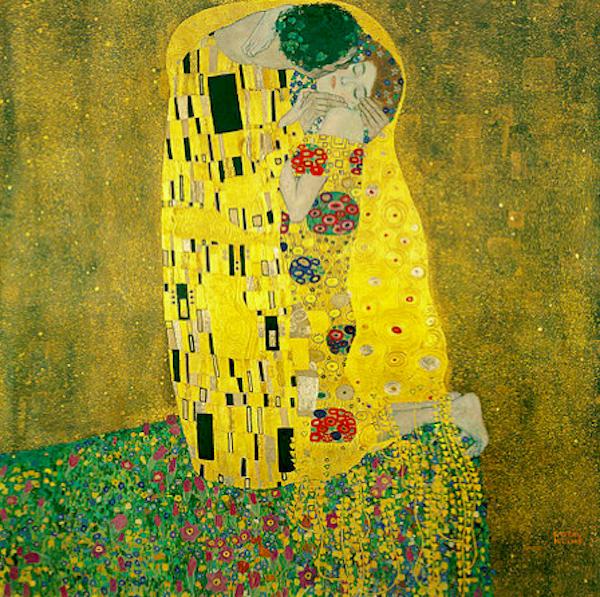Celebrating his 150th birthday, the world pays homage to the artist who died before his time from a cerebral hemorrhage in 1918. His life’s work is currently being commemorated around the world.
Google recenty acknowledged his contributions to the arts by creating a very special Google Doodle and the Vienna Tourist board has commissioned nine world-renowned artists to recreate, one of Klimt’s most famous pieces, aptly entitled “The Kiss”. Through this project the tourist board is hoping to highlight the vibrant historical art works that are on offer and to show that the contemporary and modern art scene is thriving.
Klimt was born in Vienna, so it makes perfect sense that the Vienna Tourist Board would want to host his 150th birthday celebrations. During Klimt’s lifetime he had influence both in Vienna and following his death, internationally. Klimt was one of the founding members of the Vienna Secession Movement during the 19th Century, even though he later carried on to other occupations. He was raised in a poor family, although he and his brothers were talented artists from a young age and went on to attend the Vienna School of Arts and Crafts. Klimt’s fame came strangely enough from painting architectural interiors which provided for him enough fame and fortune to pursue other painterly ambitions.
Klimt quickly moved onto painting the human form. He mostly painted women, which furthers the argument that Klimt is the man. He even found time during his life to father a considerable amount of children. Some claim that he may have had around fourteen of them. His work is often considered erotic, having models posed in a variety of revealing positions. He was influenced by Van Gogh in his later years, strikingly evident during the period of his lifedeemed the Golden Style. This was when “The Kiss” was created and the world suddenly began to pay more attention to the work that was being issued by this theatre and stage painter. With such a massive and influential history to portray, the Vienna Tourist Board looked for a mix of old and new artists to work with. They sought curator, Sydney Ogidan from BLK River and worked with the Lazarides Gallery to bring together Mode 2, Lucy McLauchlan, Vhils, Ron English, Christian Eisenberger, Bastardilla, Know Hope, Marlene Hausegger, and Shepard Fairey to accomplish an appropriate tribute to the artist that has helped shaped the past in Vienna and Austria. These are street artists, and some of the best in the world for that matter. Shepard Fairey and Ron English have recently had successful work shown in the UK. Fairey having recently created his biggest piece in Europe at London’s now defunct Pleasure Gardens just outside of London. Lucy McLauchlan is one of the UK’s leading female street artists and has recently also completed two massive pieces in Bristol as part of the “See No Evil” exhibition which ran this previous weekend and was curated by Inkie, another acclaimed street artist who has been provoking and influencing the art community for over 25 years. A few of the other less known artists are equally talented and bring a more graphic style to the group and a healthy serving of humour and good fun.
Much like Klimt, many of these artists create work that is often questioned by society and even the arts community. Whether it is through a direct message in their work or by the nature in which they create their pieces, these are artists with something to say. They are also very diverse, many coming from different corners of the world, or from different places within the UK. This lends a strong message about the image that Vienna is creating about the city and the development of the arts. They are showing that modernity does not replace history or nullify it’s value, it can in this case, be used to celebrate the past and how it has led to the future.
Klimt was the man, and is the man. His work is inspiring, a city, a country, the world, and nine international artists even at his 150th birthday. His colourful and vibrant images are as important now as they were then. They are vivid and challenging, leaving from for future generations to interpret and recreate.
Words by: Portia Pettersen Copyright Artlyst 2012 Image of “The Kiss” by: Gustav Klimt

